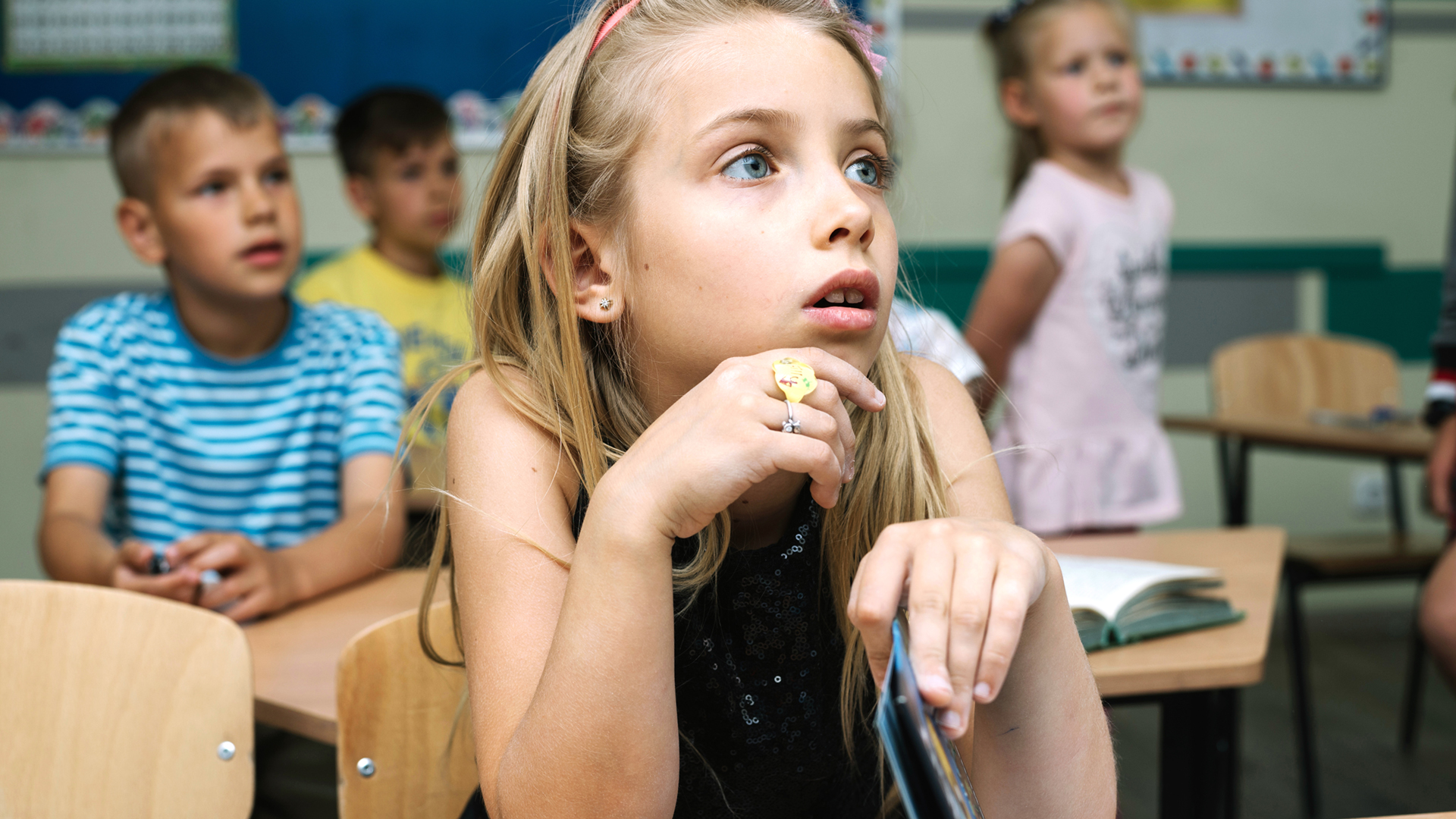Introduction:
Recently a small but important survey was conducted in our school which sought to explore how our teachers and students incorporate and value the expression of emotions during lessons. The survey results offered several interesting insights which I would like to share with you here, especially as, according to the literature, the consideration of the role of emotions in TEFL classes is quite a neglected theme.
First, however, I would like to note that I am amazed and pleasantly surprised at how much has changed in our school’s approach to this subject over recent years. There was a time when our ambitious targets focussed mainly on the quantity of content we could impart to our students. As for the students, their main responsibility was to study at home and learn the taught material as given by their teacher.
The contrast with our school’s current teaching ethos is striking. Today we seek to be more motivating and creative through a conscious effort, especially during planning, to consider how emotions may emerge and be engaged during our lessons.
The survey:
The survey consisted of the following two questions given to ten of our experienced teachers. As well as receiving written replies we held a plenary discussion on the topic. The survey questions were:
Question 1: How do emotions in your lesson plans affect your teaching identity and shape what you do in your classroom?
Question 2: How do your students respond to your emotions and how do they engage emotionally in the lessons?
I have isolated three main themes: 1) the consideration of teacher identity when planning lessons that we hope to be emotionally engaging; 2) the central role of empathy and 3) the role of student participation in social learning as a cornerstone for emotional engagement.
Text by: Agnes Katsianos
- Consideration of teacher identity when planning lessons:
Emotions can influence our decisions as teachers in the planning of a lesson and have an impact on our actions and on our students in the classroom. We, as teachers, ought to be making a conscious effort to understand how we appear as emotional beings by our students. Do we appear friendly, stern, worried, excited? Do we smile? Do we laugh? Do we joke? It is important that we look systematically at our behaviour because the way we see ourselves and the way we appear to others is frequently not the same thing. In order to illustrate this point, Simon Borg in his webinar Teacher-Self Awareness (October 12, 2021) uses the image of a cat looking at the mirror and seeing herself as a lion. In other words our sense of self may be quite inflated and not an accurate reflection of the actual teaching personality we project. This is a misalignment that must be consciously addressed. At our school, teacher reflection is highly valued, regularly discussed and seen as an ongoing process. This includes reflection after lessons and in the planning of new lessons. On this issue, one teacher responded: “I feel more confident and fulfilled. Our teaching personality is reflected in our weekly lesson plans and, just as our personalities have evolved and developed, so have our lesson plans. Learning and teaching a language is like a living organism that evolves constantly". Consciously seeking to anticipate how the course material will engage the students emotionally helps the teacher to identify as a facilitator of expression during the lesson. One response in the survey stated “Our enriched lesson plans allow me, as a teacher, to be more creative and more immersed in the teaching process. I expand my knowledge on various subjects and I try to improve my teaching techniques in order to meet the demands of a more demanding lesson."
Of course, not all emotions can be planned for. But the survey clearly revealed that a fundamental respect for our students is at the core of our emotional engagement with our students.
- The role of empathy:
A teacher’s ability to empathise with their students, their struggles and joys, is a fundamental part of enabling emotions to be expressed in class. Empathy, generally defined as the ability to sense other people's emotions, is a quality every teacher should come to their career with, but it does not end there. Virtually every lesson is an opportunity to strengthen our emotional bonds with our students and find new ways to express our empathy. Indeed, a desire to express our empathy is often the springboard for emotional engagement in the classroom. Hence it is natural to want to incorporate it into the design of our lesson plans. One teacher responded: “[Thinking about] emotions in my lesson planning had made me adopt a more humanistic approach to language teaching as I no longer focus solely on trying to develop my students' intellect; instead, I seriously consider my students' feelings and emotional needs as well, since these are the ones that actually guide their thinking, actions and attitudes. Thus I make a conscious effort to help them develop their interpersonal and intrapersonal skills, i.e. their emotional intelligence, alongside their cognitive ones. This has also enabled me to, better understand my own feelings as well and adapt my classroom behaviours and lesson objectives accordingly so as to create an enjoyable atmosphere in the classroom that could relieve my students' anxiety and motivate them to learn better."
Further to empathy, in our plenary discussions, we agreed that “love” is another word we can use for our deep concern for our students. It was described as an aggregation of positive emotions including empathy, but also joy, interest, contentment and pride. In this sense, love leads us to deeply meaningful relationships with our students and colleagues within the school community. One teacher responded: "I truly believe my students enjoy my lesson plans with emotions and are helped not only improve their English skills but also feel they belong to a community where they are free to express themselves and be regarded very highly for what they do. Through all these activities we do inside and outside the classroom a stronger bond is formed between me and my students and among students themselves."
It is true that not all emotions can be planned for as teachers are subject to the sway of emotions that affect us all. Furthermore, teachers often need to respond to unexpected emotional demands of their students. When discussing this issue we agreed that teacher immediacy in such situations can itself be a means of stimulating positive emotions in the classroom. Being able to be spontaneous with the expression of emotions helps to reduce the psychological distance between teacher and students and fosters affiliation.
- The role of social learning to engage students on an emotional
level:
As teachers we need to understand that planning for the expression of emotions in our lesson will influence our students' learning. Giving students the opportunity to use new language in emotionally engaging communicative contexts allows them to learn better and faster. This process is referred to as social learning and includes features such as “languaging” and collaborative dialogues as described by Merrill Swain (2006).
Lesson plans for social learning should not leave any room for boredom and demotivation. They should be written out full rather than just mentally constructed. And there is no doubt they will be greatly aided by a scheme of work that includes plenty of opportunities for students engage in debates, presentations, talks and storytelling. And around these activities teachers should plan to incorporate many features of social learning such as value identification, peer negotiation, collaboration and cooperation and research feedback. These are activities which raise the student’s and teacher’s energy in the classroom and both parties become co-workers, co-operators, co-researchers in an environment where learning can occur more effectively.
But even a grammar lesson could provide a good opportunity for social learning. Grammar underlines all other language skills. We may not know exactly how the brain internalizes grammar but we do know that the role of grammar is not only about accuracy. It is about structure and production of meaning. Our students can make sentences because they learn grammar, but giving them the opportunity to use the grammar in a context that they can relate to emotionally, greatly aids their learning.
I will end this section with statements from three teachers on the benefits of having students emotionally engaged in our lessons:
Teacher: Students appear to be confident and eager to share their opinions in class whether it is during a debate, the Social Test or when we discuss text values from the books. I think that this happens because they know that their voices will be heard both by their classmates and their teachers. As a result, they feel safer to express themselves and not afraid to, make mistakes when speaking in English. I don't think that my students would be happier if I suddenly asked them to follow an old lesson plan. On the contrary, I honestly believe that they would be overwhelmed and stressed in the classroom.
Teacher: When it comes to the flipped and deep processing activities the students always express their opinion/feelings about some quite challenging questions. This is a truly sincere sharing of emotions, having students delve into many different subjects and of course enrich their knowledge. This, in turn gives back a sense of fulfilment as well as gratification for my contribution to their development and progress.
Teacher: Thanks to the inclusion of activities that require students' emotional engagement, I have noticed that my students communicate with their peers more effectively, have less academic stress, manage negative emotions (eg frustration) better, are more focused and interested in the lesson, are more willing to participate and collaborate with others, have more self- confidence and show more empathy towards others' feelings, i.e. use body language and humour more often, select the right words, are more polite and respectful.
Conclusion:
Summing up, this particular survey conducted in our school shows that what our students look for in us, their teachers, are our human qualities not just our technical expertise. There are many voices coming from experienced teachers who support the idea of considering the role of emotions in our daily lesson plan. I am a strong advocate that language learning is a social activity that inevitably engages us emotionally and that we must use this to our advantage. Using the power of positive emotions in our classrooms we can cultivate a social and emotional climate and create flourishing happy groups where teaching and learning become parts of an enjoyable routine.
Let me end this article with the words of a colleague: "Students love the element of surprise, diverse activities, taking initiative and negotiating part of their syllabus, as they feel they have an active role in their own learning. This boosts their self-esteem and at the same time results in better performance and joy in their classroom environment." I could not agree more.



